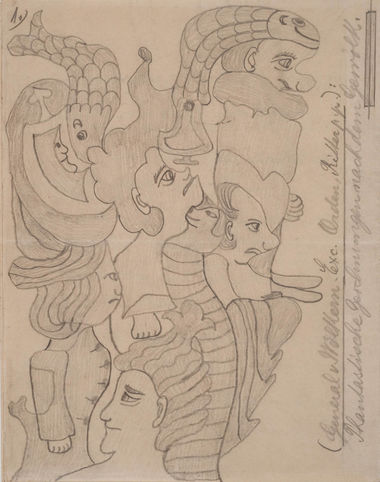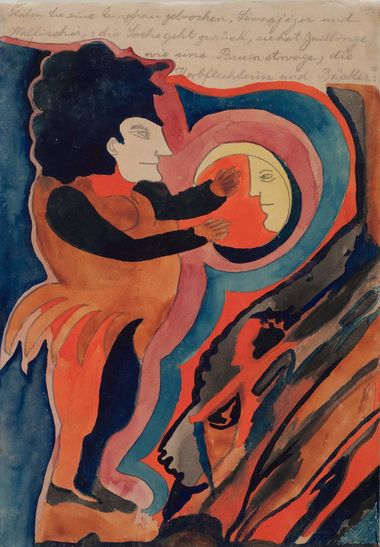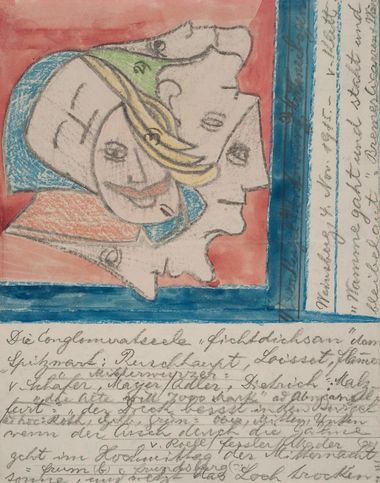August Klett



(Heilbronn 1866 – 1928 Weinsberg asylum)
After completing an apprenticeship as a merchant and his military service, August Klett went abroad (Belgium and England). He then worked in his father's business as a traveling wine and champagne salesman. Prinzhorn describes him as an enterprising businessman and a rough-and-tumble person with an exhilarating lifestyle.
From 1903 on, he became increasingly withdrawn. Depression and fear of sin tormented him, and finally led to violent states of agitation. During a hallucinatory experience, he cut himself in the stomach. This suicide attempt brought him to the Christophsbad asylum in Göppingen in 1903. Here, he developed ideas of persecution and delusions of grandeur: He believed he was Christ, described the suffering of the crucifixion and quoted from the Bible. Voices insulted and threatened him. In 1905, Klett was transferred to the Weinsberg asylum. Between aggressive outbursts, he lived in seclusion and occupied himself with reading and drawing. In 1905, he created a "colour alphabet", which he sent to an uncle for his dye works. With a self-invented cabbalistic combination method, Klett founded a system of combined numbers and letters, which were assigned colour characterizations. When painting and drawing, he left himself completely to spontaneous ideas. He delighted in the shapes and configurations that were created seemingly haphazardly by his hand.
The Prinzhorn Collection owns more than 140 works by Klett.
Hans Prinzhorn dedicated a separate section to him in his "Artistry of the Mentally Ill", as one of ten "schizophrenic masters", under the pseudonym August Klotz.